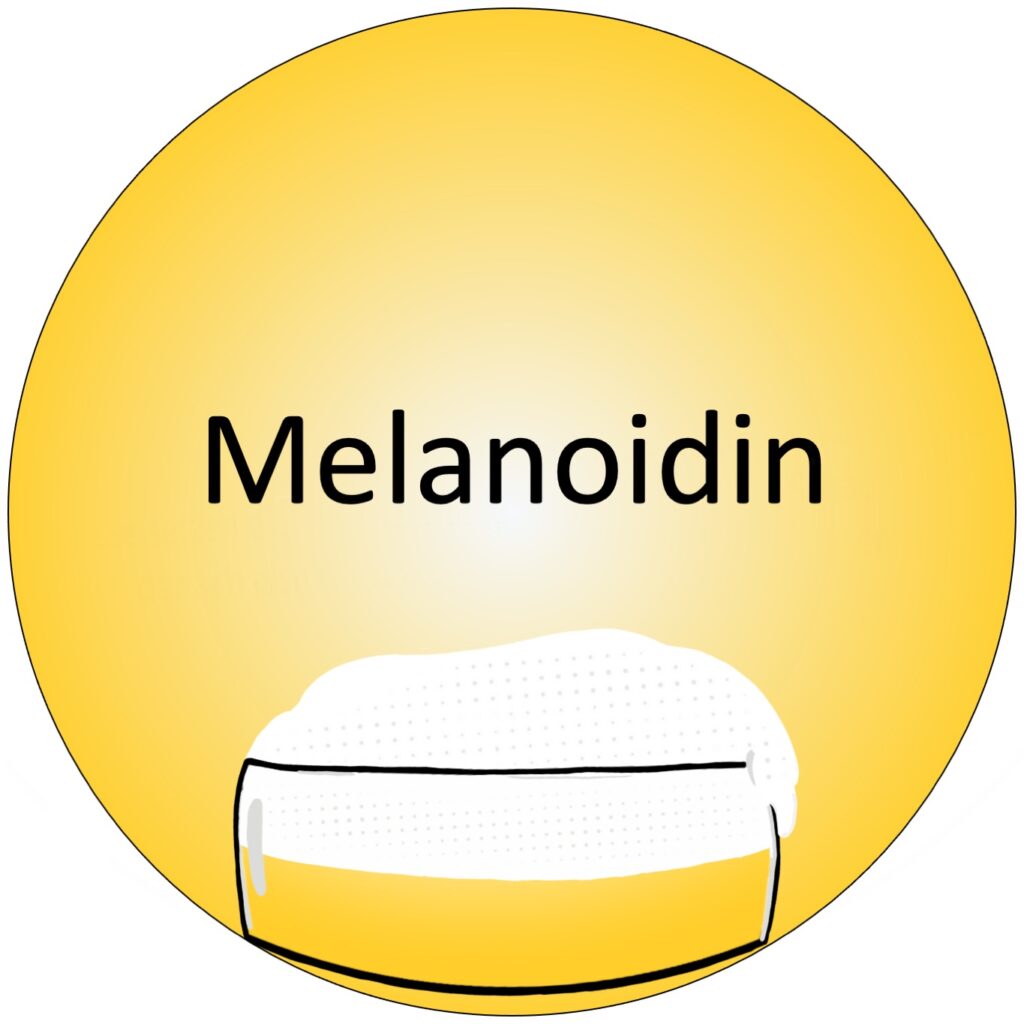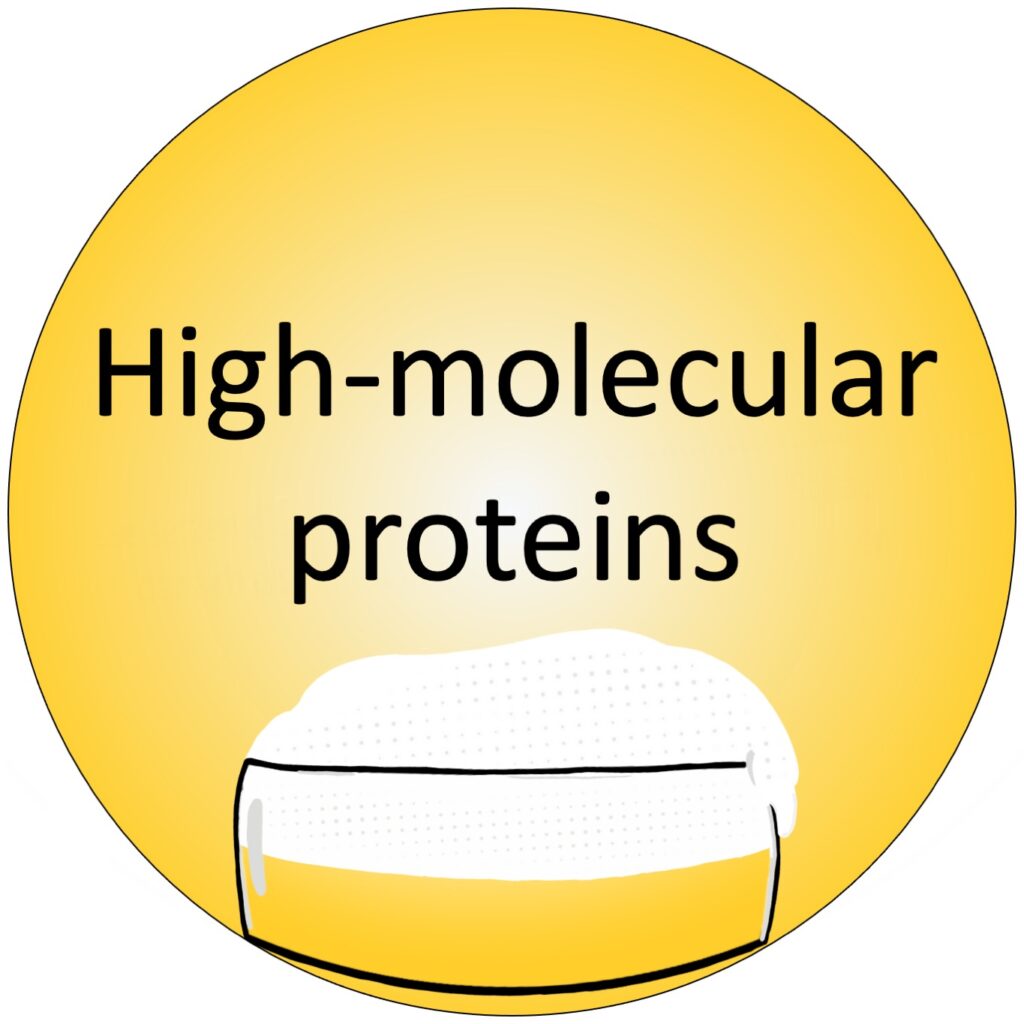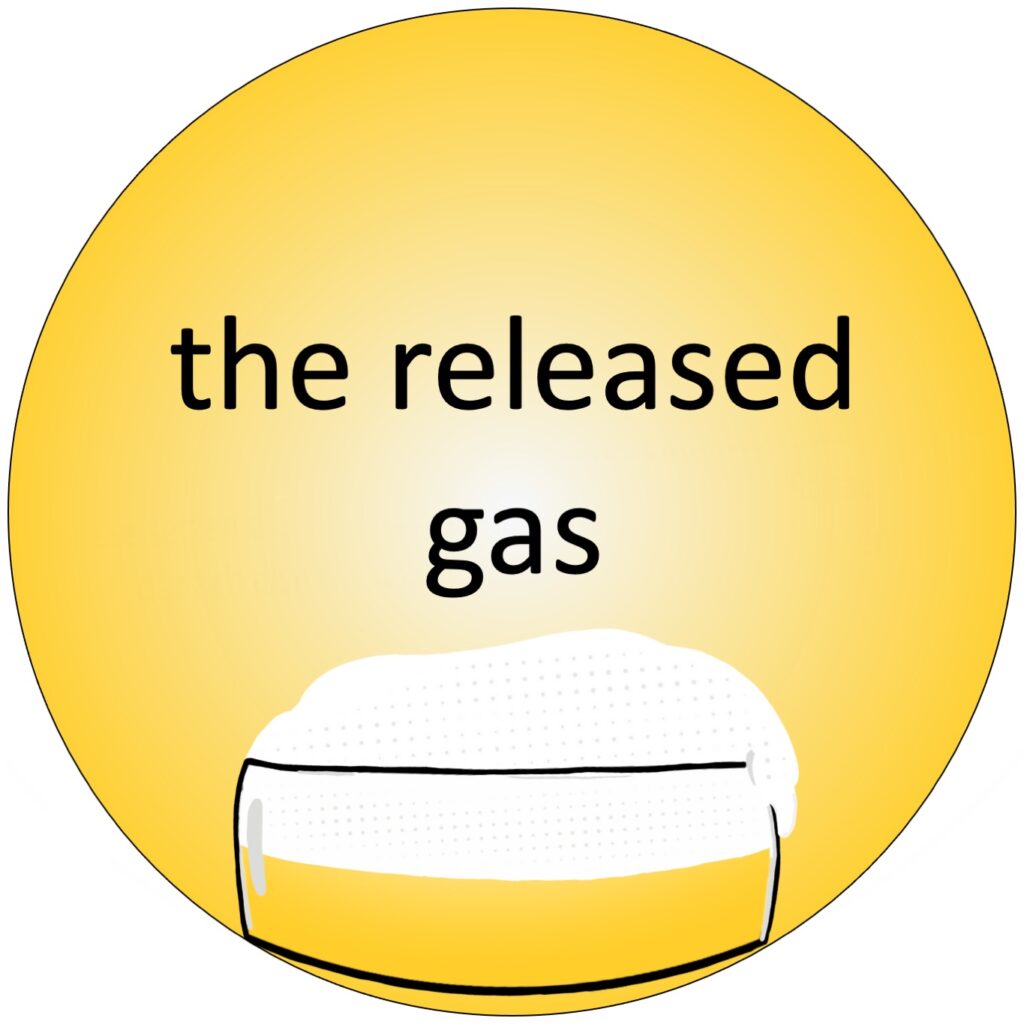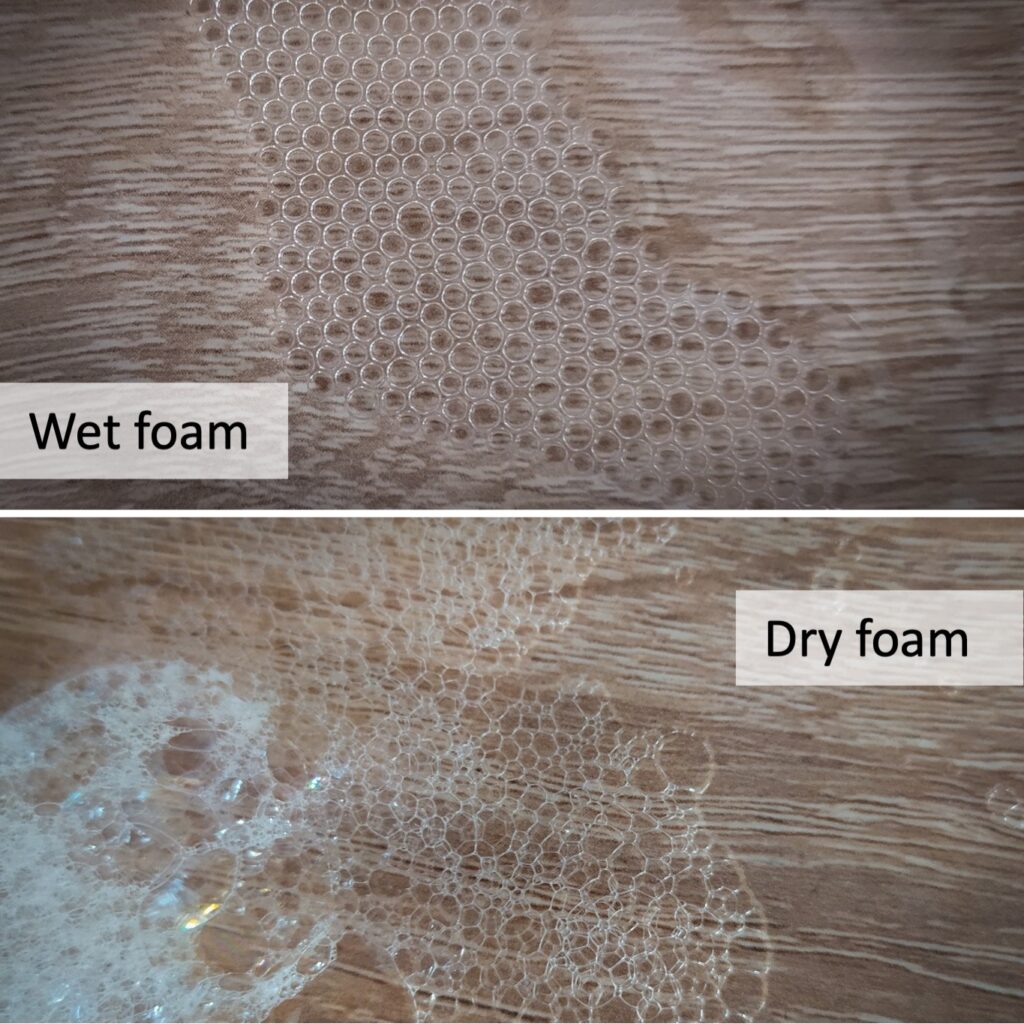You’ve probably already noticed that the beer foam is different for different types of beer. Some form a huge head of foam, while others show almost nothing. Try timelapse video to see how well you can judge different types of beer!
So why do beer foams have different levels of stability?
For this we should consider which components of the beer are responsible for a stable foam.

Melanoidins are formed when malt is heated, in the course of the so-called browning reaction. As the name of the reaction suggests, they are responsible for the coloring of the beer and the foam. However, they also affect the foam stability, which is why the foam tends to last longer in darker types of beer.

High-molecular (i.e. very large) molecules are the most important foaming agents. They collect in the liquid film of the bubbles and reduce the surface tension there. The majority of these proteins come from the grain used. Since wheat has a higher protein content than barley, the foam in wheat beers is more stable.

But why does Guinness beer have such a stable foam, even though it is actually brewed from barley? This is because Guinness adds nitrogen gas in addition to carbon dioxide. This can also be seen from the fact that the bubbles are usually smaller and a rather creamy foam is formed.
But why is this important? When the foam breaks down, so-called Ostwald ripening occurs.
The solubility of the gas plays an important role in this process. The higher the solubility of the gas, the faster the foam breaks down again. Now the solubility of nitrogen is quite a bit.



